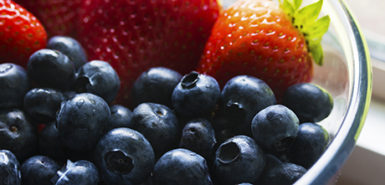
There’s been a blossoming interest in green tea in recent years, in part because of its versatility but also because of its incredible health benefits.
It’s rich with phytonutrients and antioxidant-rich polyphenols, powerful molecules that help fight free radicals, harmful compounds that can damage your body and lead to disease.
Antioxidant-rich foods and beverages such as green tea can help your body fight off these harmful compounds by neutralizing them. Antioxidants can be found in vitamins A, C, E and minerals copper, zinc and selenium, which are abundant nutrients in plant foods.
The polyphenols in green tea boast a myriad of health benefits, such as prevention of cardiovascular disease, cancer, obesity and diabetes. It also promotes good gut health and prevents chronic metabolic diseases.
In its most basic, unsweetened form, green tea is an exceptional beverage to sip throughout the day.
Enjoy an afternoon pick-me-up with a warm glass of green tea steeped with a slice of fresh lemon and a drizzle of honey. Or, try an iced strawberry and green tea lemonade.
Given the amazing health properties of green tea, it’s little wonder Asian culture and cuisine has used it in a multitude of ways for so long.
Matcha up
Matcha is a form of powdered green tea specially prepared to increase its antioxidant properties. It makes this drink a powerhouse when it comes to health benefits.
The benefits are similar to that of green tea, but the distinctive growing process concentrates the phytonutrients, which allows them to surpass the quantity found in traditional green tea.
Research has shown that matcha offers strong anti-inflammatory effects, and it may also help cognitive health.
Matcha has a vibrant color and distinctively earthy yet delicious taste. It’s commonly enjoyed as a tea or latte, although it’s also used in desserts.
While it’s important to remember plain matcha is more beneficial, creative food connoisseurs have found tasty new ways to use matcha. Go on a hunt in your grocery store to find matcha in ice cream, mochi or chocolate bars—or try your hand at matcha-baked doughnuts.
When traditionally prepared, matcha has less caffeine than coffee.
The caffeine in matcha, however, is absorbed and used differently by your body because of its additional phytonutrients.
Matcha is also rich in l-theanine, an amino acid that helps slow the absorption of caffeine, allowing for a steadier release over a longer period. This helps prevent the jitteriness—or caffeine crash—that can often happen when consuming caffeinated beverages.
It’s best to purchase a high-quality matcha powder if you plan to make your own. You can create your own latte, or visit a local coffee shop or local market to find great varieties.
If you want to challenge yourself to try something new and healthy this spring, give matcha a try.
 /a>
/a>
 /a>
/a>
 /a>
/a>